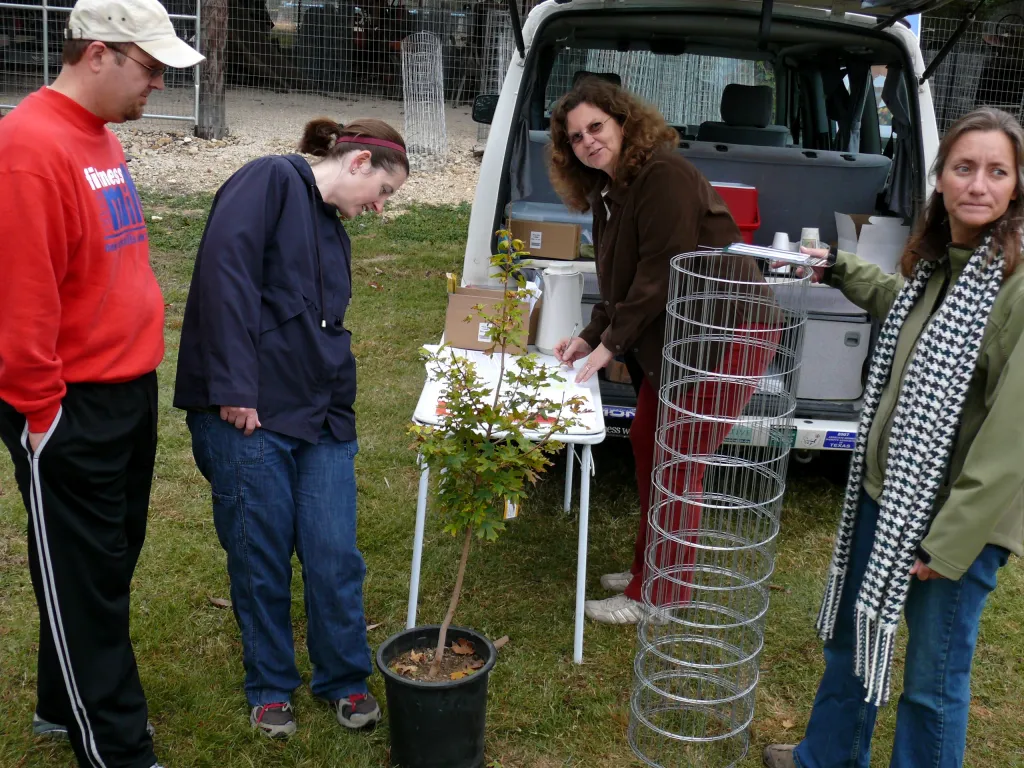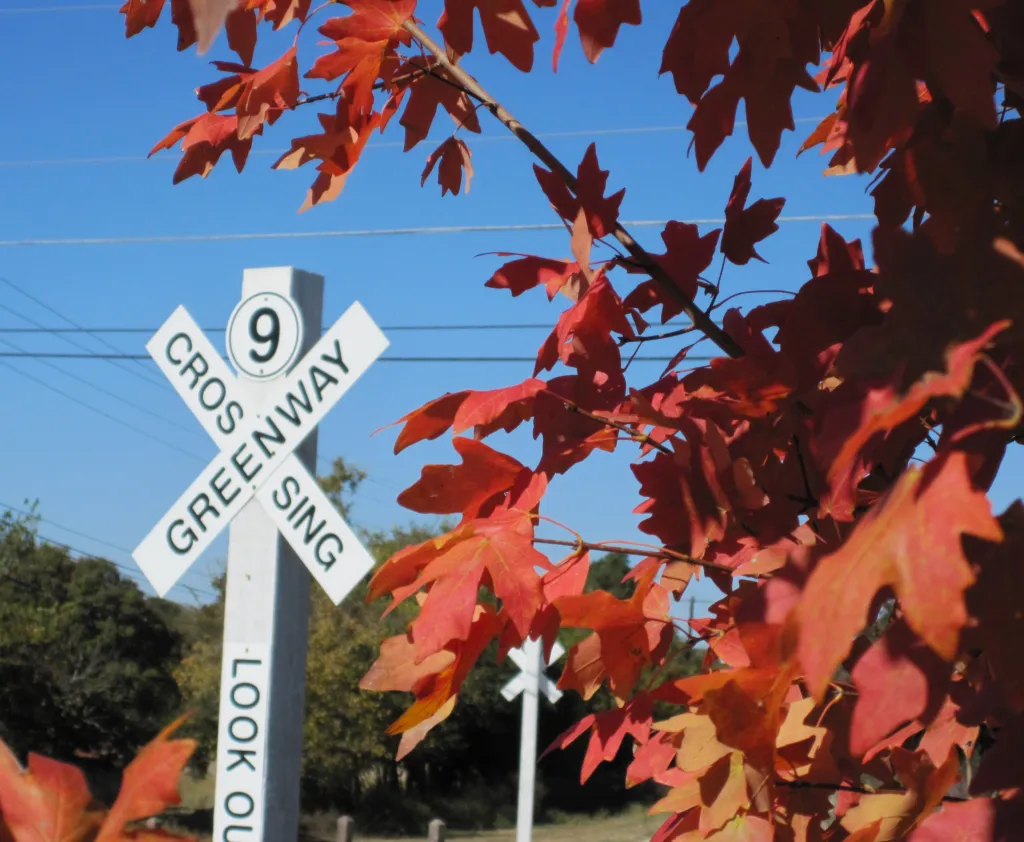Author: Bill Ward
For the fifth consecutive year, Maple Momma and her team of volunteers helped add scores of bigtooth maple trees to the streets of Boerne. During 2010, Maple Momma (aka Suzanne Young) took applications from Boerne homeowners and businesses for 104 bigtooth maples. These were distributed free of charge last week.

This year there also will be a special December giveaway of 38 bigtooth maples to be planted along Main Street and around Main Plaza. These will add to the hundreds of maples given to Boerne since 2006 by the Bigtooth Maples for Boerne program of the Boerne Chapter, Native Plant Society of Texas.
Bigtooth Maples for Boerne is a ten-year effort to bring the beautiful fall colors of our native bigtooth maple into the city of Boerne. Perhaps one day in the near future, a “trip to see the maples in fall color” will mean a drive through the streets of Boerne as well as a walk through the canyons of Lost Maples State Natural Area.
The Bigtooth Maples for Boerne project is generously sponsored by the Lende Foundation. The trees are supplied by Baxter Adams, who raises thousands of maples at his nursery on Highway 16 in Medina, Texas. The long-term commitment of both the Lende Foundation and Baxter Adams to Bigtooth Maples for Boerne ensures this program is one of the most-effective community tree-planting programs in Texas or anywhere else.

Maple Momma’s long-term commitment to Bigtooth Maples for Boerne is another major factor in its success. The effort she expends on this program all year long is impressive, especially because this is just one of the community projects in which Suzanne Young is a leader.
During the five years the Bigtooth Maples for Boerne program has existed, Maple Momma has devised a well-organized annual routine, which includes publicizing the program, receiving applications for trees, ordering trees for the fall giveaway, buying fence wire and mulch, posting instructions for care and planting, and soliciting volunteers to help make wire cages, unload the maples, and distribute the trees to the lucky recipients. At the end of each year, she checks all the accounts and makes a report on that year’s expenditures to the Lende Foundation. Maybe we should call her Superwoman instead of Maple Momma.

Applications for receiving a free bigtooth maple may be made online at maplesforboerne@aol.com. Only citizens, businesses, or organizations within the Boerne City limits are eligible to receive the trees. Trees must be planted where they are publicly displayed, generally on the street side of a home or business.
Each tree is tagged with a special number for long-term monitoring of the trees in order to gather data for a study on best growing conditions for urban plantings of bigtooth maples.
The landscape of the new Police and Municipal Court Complex on Old San Antonio Road will feature several bigtooth maples. In addition to that, a dozen bigtooth maples have been ordered for the grounds of the new Patrick Heath Public Library off of Main Street.
Bigtooth maple (Acer grandidentatum) truly is a Boerne native. I don’t know whether any naturally grown trees remain within the Boerne city limits, but there are thousands of bigtooth maples in the limestone canyons on the northwestern edge of Boerne, and a few grow along Cibolo Creek just southeast of Boerne. Bigtooth maple is the Boerne tree!
